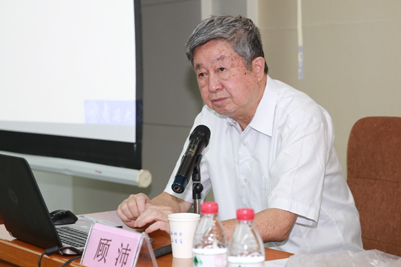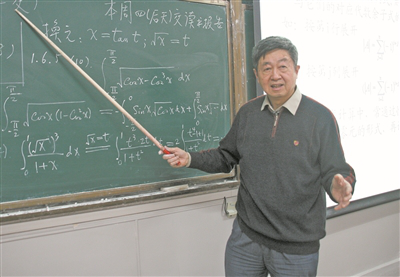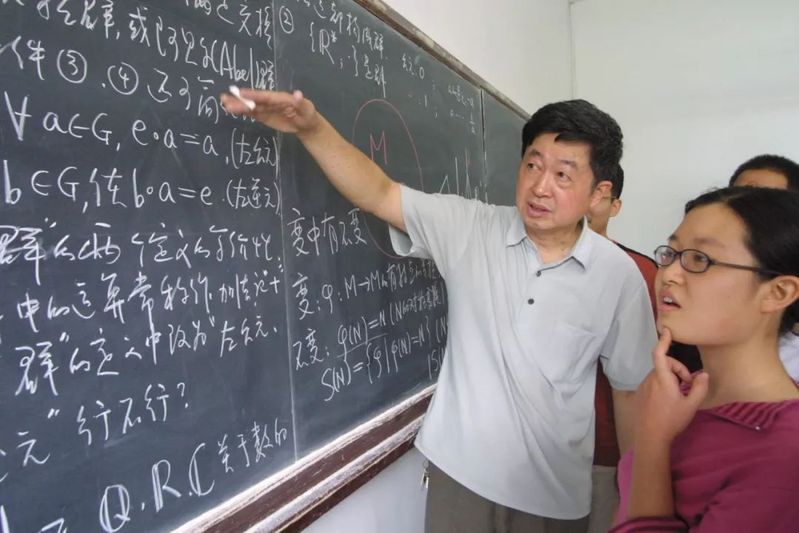Gu Pei: I’ll Show You the Beauty of Mathematics
The Core of Mathematical Culture: The Beauty of Mathematics

Gu Pei holds that, while learning mathematics, not only should one learn mathematical knowledge, but also experience the mathematical culture embedded in it. It is necessary to master mathematical viewpoints, understand mathematical thinking, learn mathematical methods, understand mathematical ideas, improve mathematical literacy, and gradually learn to perceive the beauty of mathematics.
In mathematical culture classes, Gu Pei often readily illustrates abstract and profound mathematical truths with easy-to-understand examples. For example, the beauty of mathematics in one-to-one correspondence is not easy for students to understand. Therefore, he designed the scenario of Dazu Carving the Thousand Handed Goddess of Mercy in Stone to help students understand the beauty of mathematics by explaining it starting with emotion and moving to reason.
The class of mathematical culture should focus on teaching mathematical thinking. The essence of that progress is the organic integration of mathematical knowledge and scientific spirit, and the organic integration of scientific and humanistic quality education. For more than ten years, Gu Pei and his colleagues have been sparing no effort to promote this concept. Mathematical culture has become not just an ordinary course, but a career worthy of a lifetime's work.
Dissemination of Mathematical Culture: the Art of Teaching in the Classroom

In recent years, more than 180 universities including Tsinghua University and Peking University, and 60 primary and secondary schools, have invited Gu Pei to give lectures on mathematical culture. He has been invited to give presentations on mathematical culture courses at various national conferences on educational reform more than twenty times.
Mr. Gu ardently loves his career as a teacher. Many students say Mr. Gu is “already a sight to behold just standing there.” Every time he announces the end of class, all the students applaud to pay tribute to him. In every class, he attaches great importance to interaction with students. What's more, the semi-open-book exams at the end of the semester are an important aspect to allowing students to appreciate the beauty of his art of teaching.
Over the years, the mathematics culture course has been very popular with students, which has lead to use of computer screening in order to manage enrollment. Some students have not been selected to take the class for three semesters in a row, and then have had to plead with the teachers in the Office of Academic Affairs to manually enroll in courses rather than enroll electronically.
When it comes to his over forty years of teaching experience, Gu Pei has come to a deep understanding of this principle: “if a teacher is committed to teaching as a profession, loves teaching as a career, and pursues teaching as a science and art, he will be at a higher level and be able to teach better.”
The Soul of Mathematical Culture: the Education of Competence

A teacher is a person who is able to propagate the doctrine, impart professional knowledge, and resolve doubts. In Gu Pei's view, propagating the doctrine comes first. A teacher who only knows how to impart professional knowledge and resolve doubts is at best a professional and vocational instructor. A good teacher should not only impart book knowledge, but also have a high level of knowledge and morality.
Gu Pei genuinely cares about his students, especially those who have difficulties. Sun Wenchang, a student in the pilot math class of 1989, was a few points short of passing the CET-4 and could not graduate normally. For a few consecutive days, Gu Pei went to the Office of Academic Affairs to plead his case, saying that Wenchang has much potential in mathematics. As a result of such efforts, the university granted Sun Wenchang an exemption from the examination to study for a Master's degree at the university, provided that he passed the CET-4 the following year.
After completing his doctoral studies, Sun worked as a postdoctoral researcher at the Chern Institute of Mathematics, where he received a first-class grant from the China Postdoctoral Science Foundation. After his postdoctoral study, Sun stayed on as a lecturer and was promoted to professor in 2002. “Without Mr. Gu's care, I definitely would not have achieved what I have today. I thank Mr. Gu very much for giving me a different life,” Sun Wenchang said.
“The main purpose of a mathematical culture course is to improve the students’ quality of thinking and their mathematical literacy. Moreover, a good teacher should be a designer, guide, inspirer, mentor, collaborator, and partner in students' learning.” This is what Gu Pei says, and even more so, this is what he does.









